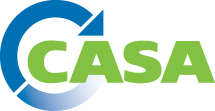FEMA and CalOES Emergency Assistance
Under the recent COVID-19 funding package, the Federal Emergency Management Agency (FEMA) received $45 billion to utilize and distribute to states and localities. As part of the funding process, FEMA requires a Request for Public Assistance in order for governmental entities to follow-up on specific reimbursement requests. In order to act on this, agencies will need to submit a FEMA Form 90-49 and CAL OES forms 130 and 89. The FEMA forms can be found here.
April 22, 2020: The Treasury just released guidance outlining what the eligible uses are for the Coronavirus Relief Fund. The guidance is intended to assist states and local governments that receive assistance through the fund. Along with the guidance, the Treasury also released a short FAQs document about the Fund. The department is working its way through getting the rest of the money out to states and local governments by the end of this week.
CalOES also has a website that outlines the process for submission for FEMA Public Assistance grants, offers webinars explaining the process and use of funds, and explains the new FEMA Grants Portal website.
UPDATE!
FEMA and CalOES have developed updated guidance and information on applications for disaster assistance. FEMA has extended the due date for submittal of the Request for Public Assistance (RPA) to 30 days after the incident period for the disaster event closes. However, Cal OES is advising organizations to submit sooner rather than later, so as not to wait until the last minute.
- California COVID-19 Pandemic (FEMA-4482-DR-CA): Guidance, Instructions, Contacts, Forms and Links
- FEMA Application Fact Sheet
- CalOES Contact Information
April 17, 2020
FEMA Advisory
Disaster Financial Management Guide
On Thursday, April 16, FEMA released the “Disaster Financial Management Guide” to support jurisdictions in establishing and implementing sound disaster financial management practices, which are critical for successful response and recovery. The guide takes an all-hazards approach and addresses a broad range of issues and contains concepts, principles and resources applicable to the coronavirus (COVID-19) pandemic response environment.
The guide identifies the capabilities and activities necessary to prepare and successfully implement disaster financial management while maintaining fiscal responsibility throughout response and recovery operations. This includes considerations and practices necessary to track, calculate and justify the costs of an emergency; support local reimbursement reconciliation; avoid de-obligation of grant funding; and effectively fund and implement recovery projects and priorities. The principles, concepts and resources contained in the guide can support jurisdictions in identifying the resources needed to support their community, increase the efficiency of recovery efforts, and reduce the likelihood of audits and financial penalties for the jurisdiction.
To view the guide, please visit https://www.fema.gov/plan.
April 13, 2020
FEMA Advisory
Coronavirus (COVID-19) Pandemic Whole-of-America Response
Attached you will find today’s FEMA Daily Briefing Points for the Whole-of-America response to coronavirus (COVID-19) pandemic. These briefing points include Topline Messages, as well as Supply Chain Task Force; By the Numbers; FEMA and Department of Health and Human Services Response; and Guidance from Federal Agencies.
Topline messaging includes:
- FEMA, HHS, and our federal partners work with state, local, tribal and territorial governments to execute a whole-of-America response to COVID-19 pandemic and protect the health and safety of the American people.
- FEMA continues to expedite movement of commercially pre-sourced and commercially procured critical supplies from the global market to medical distributors in various locations across the U.S. through Project Airbridge.
- Data and information-sharing are critical for moving forward in this response and equipping areas expected to be the next medical hot spots.
- Considering both scarcity of ventilators in the Strategic National Stockpile (SNS) and current capacity of the private sector to meet demand, the federal government has adopted a process to manage allocation of federal ventilator resources to ensure the right amount of ventilators are shipped to the right states to sustain life within a 72-hour window.
- Emergency managers and public health officials submit requests for ventilators to FEMA/HHS, providing detailed data on total medical/ hospital beds; total acute care (ICU) beds; normal occupancy; predicted surge occupancy; and number of ventilators available in the state.
- States can send requests outside of the 72-hour window for consideration by the federal government; allocation decisions and/or shipments, however, should not be expected until the state is within the immediate 72-hour window.
- Hospital administrators across the country are being asked to provide daily reports on testing, capacity, supplies, utilization, and patient flows to facilitate the ongoing public health response.
Treasury has launched its portal for state and local governments to request Coronavirus Relief Funding. The portal page also includes guidance and informational materials on eligible funding uses and eligible units of government. The portal link can be accessed here.
FEMA Exercise Starter Kit
Fact Sheet
Reconstituting Operations Workshop
Reconstituting Operations Workshop Slides
Additional Resources
Best, Best & Krieger Update on Preparing for FEMA Public Assistance Reimbursement.
Best, Best & Krieger Free Webinar, April 22: Part Two: Leveraging FEMA and Other Federal Grant Funding Opportunities for COVID-19 Response



 @CASA_CleanWater
@CASA_CleanWater